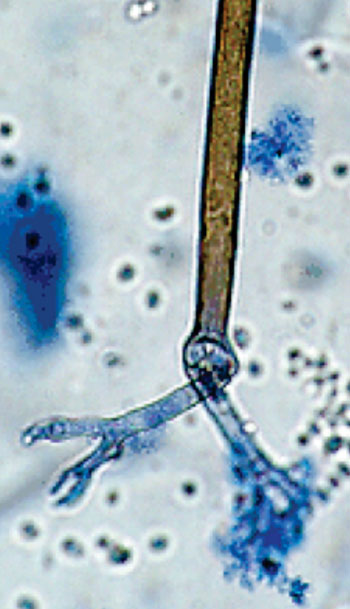Fungal Infection Identified by Pathogen Detection Array Technology
By LabMedica International staff writers
Posted on 09 Feb 2016
Patients who are undergoing treatment for diseases such as cancer often face the added challenge of a compromised immune system, which can be challenging to both of their condition and the drugs used to treat it, leaving them vulnerable to various opportunistic infections.Posted on 09 Feb 2016
A novel investigational technology has been developed that can rapidly identify elusive microorganisms which are not only life-threatening, but those caused by rare organisms are extremely difficult to isolate and identify.
Scientists at the University of Pennsylvania (Philadelphia, PA, USA) utilized a pathogen array technology referred to as PathoChip, comprised of oligonucleotide probes that can detect all the sequenced viruses as well as known pathogenic bacteria, fungi and parasites and family-specific conserved probes, thus providing a means for detecting previously uncharacterized members of a family. The technology contains 60,000 probes that simultaneously test for all known viruses, as well as a variety of bacteria, fungi, helminths, and protozoa.
The investigators applied the PathoChip test to tissue samples of a patient with relapsed acute myelogenous leukemia (AML). The patient, a middle-aged man, had undergone chemotherapy for the cancer, a treatment that is well known to weaken the immune system, increasing susceptibility to infection. As a result, he developed an unknown fungal infection. The team rapidly identified a zygomycetous fungus, Rhizomucor, an otherwise challenge for the clinical laboratories, predominantly in the patient with acute myelogenous leukemia.
Erle Robertson, PhD, a professor and vice-chair for research in Otorhinolaryngology, said, “We've run many tests to see if we could identify pathogens in the laboratory, just to see if the PathoChip has efficacy in identifying a variety of organisms, and we were able to identify all infectious agents tested, but this was the first time we actually looked directly at a patient sample to identify a pathogenic agent. With this technology, out of 60,000 possibilities and probes that we used, in a little over 24 hours we were able to identify this particular fungi.” The study was published originally online on November 20, 2015, in the journal Cancer, Biology & Therapy.
Related Links:
University of Pennsylvania
















